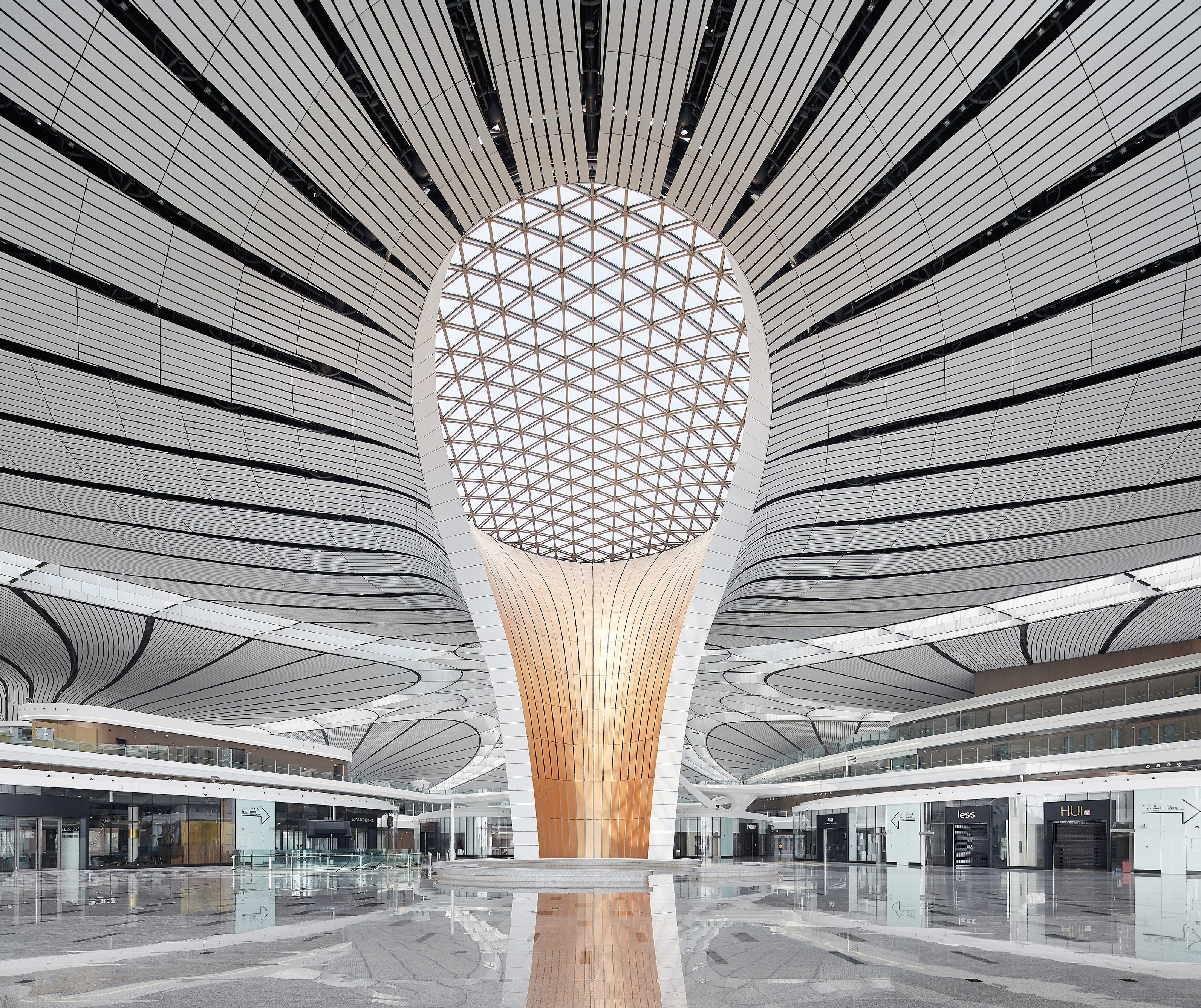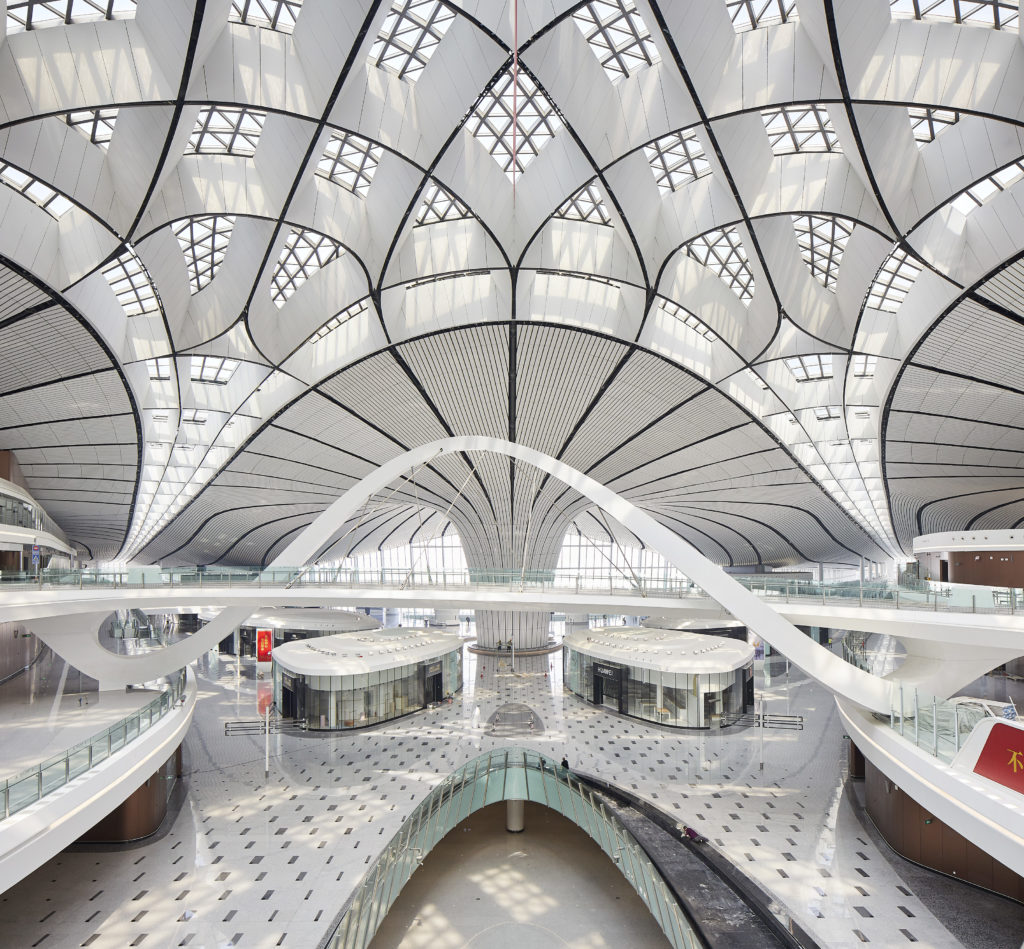
How architects visualize design for world’s biggest airport
“This airport is the biggest single, walkable terminal building in the world,” says Patrik Schumacher, who leads Zaha Hadid Architects, the global firm based in London tasked with designing the airport, which opened in September. “Its distinctive character is its long span roof structure which sculpts the space, draws in natural light and orients passengers to their gates.”
Conde Nast Traveler’s review praised how “the innovative starfish design means you never have to walk more than 10 minutes (1,970 feet, to be exact) from the core to the furthest gate in each wing.”
“;s:13:”fragment_type”;s:13:”content-block”;s:11:”fragment_id”;s:4:”7561″;s:13:”unit_position”;s:1:”0″;}|a:4:{s:18:”content_block_text”;s:796:”The structure just climbed to the top as the world’s largest airport terminal at 7.5 million square feet, which Conde Nast Traveler says is the equivalent of 98 soccer fields. Eventually, 100 million passengers will pass through it annually.
Schumacher was a student 30 years ago when he started working with Zaha Hadid, who passed away two years ago. He helped her build the brand to a firm of more than 400 employees. They started designing museums, cultural centers and concert halls; now the firm is also reimagining workspaces and whole city districts.
“Zaha Hadid was a rare innovator who has radically expanded the contemporary design language and repertoire,” Schumacher says.
One thing that helps them stay ahead of the curve is technology.
The firm writes their own software, so Schumacher says they’re “very hungry” for new processing power in a mobile package, as they’re constantly roaming around the office, and around the world. They used to lug around heavy models to meetings. Now, they bring laptops.
“That’s why we love Acer and ConceptD’s product line,” Schumacher says. “ConceptD is helping us to visualize and simulate the experience with real time navigation through the airport. ConceptD opens a powerful window into our creations ahead of construction.”
They use the ConceptD 7 Pro, “which runs our models faster than any desktop or workstation we have in the office. That’s a game changer.”
Schumacher believes they’re winning new business as a result.
“We noticed that it’s super sharp, super true to color and we love that. We need that because we are simulating something which we translate in reality, and we want to see what we get ahead of time. So for us as designers, that’s critical,” he says.
They have a dedicated VR lab and working group in the office.
When they pitch to clients, they use VR and ConceptD for presentations that deliver a realistic experience of the project. For instance, when they envision redesigns of city districts, the city’s representatives can move within the design. The firm has won assignments based on these kinds of presentations.
“That makes it compelling for the customer, rather than having static images or drawings to react to. It’s a real convincing tool for the client, but also for us,” Schumacher says. “We discover what the space is like, what you see from where, and that helps us as designers bring it to life.”
Lead photo: Beijing Daxing International Airport, photo by Hufton+Crow


